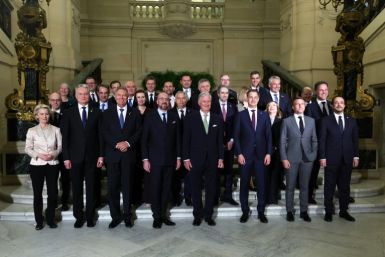What’s The Best Fixing Strategy When Mortgage Rates Are Rising?
When mortgage rates are increasing, there can be clear benefits to choosing a fixed interest rate. But how do you choose the best fixed home loan rate for your situation? In this article we take a high-level look at what’s behind the rising mortgage interest rates and how to choose the best fixing strategy for your needs.
Why do mortgage interest rates rise and fall?
Mortgage providers, such as banks, get the money they lend to you from several sources. The main one is from money people deposit with them. Another is from international wholesale lenders. If mortgage providers can’t get what they need from these sources, they borrow from the Reserve Bank of New Zealand. Mortgage lenders have to pay interest on the money they borrow, then they lend it to you at a slightly higher rate.
What is the official cash rate (OCR)?
The OCR is an interest rate that’s reviewed and set by the Reserve Bank seven times a year. Mortgage lenders borrow money from the Reserve Bank at a slightly higher rate.
If the economy needs a boost, the Reserve Bank will lower the OCR, which makes borrowing cheaper and encourages people to spend more. However, too much spending confidence can lead to inflation. as people are happy to pay higher prices. If inflation rises beyond the limits the Reserve Bank is required to keep, they will raise the OCR. This increases interest rates, which stops people spending quite so much. These changes in the OCR have some influence on mortgage lending rates, particularly the floating and short-term fixed rates.
Risk also plays a role in setting interest rates
Floating or variable interest rates are usually higher than the fixed rates. This is partly because borrowers can offset or repay all or some of a floating mortgage, or switch to another lender, whenever they choose. So there’s more uncertainty and risk for the lender, which they need to cover by charging a higher rate. Uncertainty about the future also goes some way to explaining why long-term fixed rates are usually higher than short-term rates. From the lender’s point of view, the longer the term, the higher the risk of borrowing costs rising and reducing their margin.
How to work out your ideal fixing strategy
When mortgage rates are stable, choosing the right strategy for your situation is typically more straightforward. But even when rates are rising quite quickly, as they began to do in late 2021, there will still be a best strategy for you, even if it’s not ideal.
Looking at the 2021 period provides some useful insights. With floating rates much higher than fixed, and interest rates continuing to fall in previous years, there had been a well-established strategy of choosing one-year fixed rates, year after year. They were the lowest rates available and didn’t lock borrowers in for too long. Even as rates began to increase slightly, this strategy remained in favour.
Lenders then started lifting their mortgage rates with greater pace. This made some borrowers wonder whether continuing the one-year roll-over strategy would lead them to unaffordable or unbudgeted rates, and a worrying level of uncertainty. For many, it could be worth paying extra for the peace-of-mind offered by a longer-term fixed interest rate. Reducing risk was becoming more important than simply locking in the cheapest rate.
Even early in 2021, when one-year rates were as low as 1.99%, experienced economists such as Tony Alexander urged risk sensitive borrowers to consider the then five-year fixed rate of 3%. By November, the same rate had reached 5%.
In a November 2021 Stuff article, ASB chief economist Nick Tuffley said they expected the OCR to rise from 0.5% to a peak of 2%. This was an indication that most fixed mortgage rates will settle around 4.5% to 5.5%. The five-year rate had already done that, so continuing to roll over short-term mortgages still seemed likely to pay off; but not if interest rates increased more rapidly than expected.
At the same time Infometrics chief forecaster Gareth Kiernan said that with a 3.3% one-year rate and a 3.9% two-year rate, the one-year rate would have to be 4.5% a year later for it to be worth choosing the two-year rate. And for that to happen, the OCR would have to reach around 2.25%.
There were already predictions the OCR would reach 2% and emerging low unemployment, potentially creating higher labour costs, risked increasing inflation even further. As a result, Kiernan suggested people who were coming up for re-fixing should carefully consider the added certainty provided by the two-year rate of 3.9%.
Focus on your appetite for risk
Unfortunately, predicting interest rates and how long to fix is never an exact science. What we do know is, even at around 5%, interest rates are at historic lows compared to the last 20 years. Finding the right strategy for you will come down to your appetite for risk. It may be less about choosing the cheapest path and more about selecting the one that offers the most value to you, in terms of peace-of-mind. However, if the prospect of rates rising above 5% doesn’t keep you up at night, you might prefer to continue with a short-term rates strategy for now. Another way to reduce risk is to split your borrowing between two mortgages; one on a short term and the other long. This has another benefit of letting you make a lump-sum repayment when your short-term mortgage comes off fixed.
It pays to get independent advice
There’s a lot to consider here, so it usually pays to get some experienced independent advice. Before you make a decision, it’s smart to run your ideas past an accountant, lawyer or respected mortgage broker.






